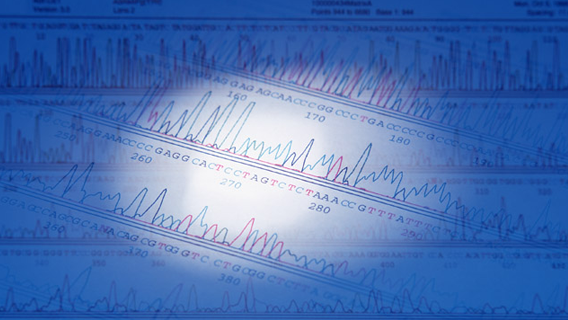Principles

KF Moisture Titrator

What is a Karl Fischer Moisture Titrator?
A German chemist named ” Karl Fischer ” discovered this method for measuring water content, which has the highest reliability of the various methods.
As one type of titration device that utilizes the alternative reaction of iodine to water, this device titrates the Karl Fischer reagent (iodine) and finds the water content.
Measurement principles of KEM Karl Fischer Moisture Titrators
The iodine and water in the Karl Fischer reagent react quantitatively as shown in the following equation. Taking the name of the person that invented this method of using this reaction to quantify the moisture, the method is named the Karl Fischer Moisture Titration Method.

Karl Fischer Moisture Titrators

Volumetric Method and Coulometric Method
There are two types of measurement methods, the volumetric titration method and the coulometric titration method.
Volumetric titration method:
Dissolve a sample in an alcohol-based solvent, and cause reaction with the Karl Fischer reagent (iodine, sulfur dioxide, base). The moisture content of the sample is determined from the volume of Karl Fischer reagent consumed.
Features:
A wide range of measurement of moisture content is possible. (moisture content from double digit ppm to 100%).
Using dehydration solvent, a measurement of moisture content in various samples can be measured.
Coulometric titration method:
Dissolve a sample in a solvent (alcohol, sulfur dioxide, base, iodine ions), and cause reaction by changing iodine ions to iodine through electrolytic oxidization. The moisture content of the sample is determined from the quantity of the electricity (coulomb) required in electrolytic oxidization.
Features:
The sensitivity level of moisture is extremely high, and trace amount of moisture from 1μg to 50mg can be measured. (moisture content from single digit ppm to 100%) By using together with an evaporator, the measurement of moisture content of various solid samples becomes posssilbe. (Especially for a substance with very low moisture content such as plastics, etc.)
What are the advantages of using a moisture titrator?
Improvement of reliability of measurement data.
Because it uses a high-precision electric burette, the reliability of data is raised.
No difference due to human error
With analysis by hand, it is a matter of course that different measurements occur with the same sample, but when the task is left to the device, the same value results, no matter who is doing the measuring.
Automation becomes possible
With the use of such options as a multiple sample changer, the device can measure several samples on its own, after the samples have simply been lined up.
Measurement can be performed without experience or specialized skills.
In analysis, there are cases in which one must have mastery of skills or years of experience. However, if one simply learns how to use the device, every person can analyze at the same level.
What kinds of analysis are performed? [Moisture Titrator]
Industrial chemical analysis
| Item for analysis | Applicable standard |
|---|---|
| Polyurethane pellet | JIS K0068 |
| Sulfuric acid | JIS K0068 |
| Phenol resin | JIS K0068 |
| Disodium phosphate | JIS K0068 |
| Flourine resin | JIS K0068 |
| Calcium carbonate | JIS K0068 |
| Polychloride veneer powder | JIS K0068 |
| Monoethanolamine | JIS K0068 |
| Urethane foam ingredients | JIS K0068 |
| Protein | JIS K0068 |
| Isopropyl alcohol | JIS K0068 |
| Calcium hydrate | JIS K0068 |
| Sodium dihydrogen phosphate | JIS K0068 |
| 1-methylnaphthalene, α- methylnaphthalene | JIS K0068 |
Pharmaceuticals/Drug Analysis
| Item for analysis | Applicable standard |
|---|---|
| Taurine A | |
| Sucrose fatty acid ester | |
| Folic acid | |
| Riboflavin sodium phosphate | |
| Dipotassium glycyrrhizinate | |
| Poultice agent | |
| Ascorbic acid derivatives | |
| Sucrose fatty acid ester |
Food analysis
| Item for analysis | Applicable standard |
|---|---|
| Coffee | JAS (Japanese Agricultural Standard) ISO (International Organization for Standardization) Codex (Codex Alimentarius Commission) |
| Spices | JAS (Japanese Agricultural Standard) ISO (International Organization for Standardization) Codex (Codex Alimentarius Commission) |
| Fllavoring | JAS (Japanese Agricultural Standard) ISO (International Organization for Standardization) Codex (Codex Alimentarius Commission) |
| Corn starch | JAS (Japanese Agricultural Standard) ISO (International Organization for Standardization) Codex (Codex Alimentarius Commission) |
| Grains | JAS (Japanese Agricultural Standard) ISO (International Organization for Standardization) Codex (Codex Alimentarius Commission) |
| Dry food | JAS (Japanese Agricultural Standard) ISO (International Organization for Standardization) Codex (Codex Alimentarius Commission) |
| Meat extract | JAS (Japanese Agricultural Standard) ISO (International Organization for Standardization) Codex (Codex Alimentarius Commission) |
| Cheese | JAS (Japanese Agricultural Standard) ISO (International Organization for Standardization) Codex (Codex Alimentarius Commission) |
| Candy | JAS (Japanese Agricultural Standard) ISO (International Organization for Standardization) Codex (Codex Alimentarius Commission) |
| Chocolate | JAS (Japanese Agricultural Standard) ISO (International Organization for Standardization) Codex (Codex Alimentarius Commission) |
Fat analysis
| Item for analysis | Applicable standard |
|---|---|
| Butter | |
| Margarine | |
| Vegetable oil | |
| Safflower oil | |
| Rice wax | |
| BTOil |
Petroleum products analysis
| Item for analysis | Applicable standard |
|---|---|
| Engine oil | JIS K2275 |
| Naphtha | JIS K2275 |
| Grease | JIS K2275 |
| Brake fluid | JIS K2275 |
| Antifreeze | JIS K2275 |
| Floor wax | JIS K2275 |
| Water glycol | JIS K2275 |




